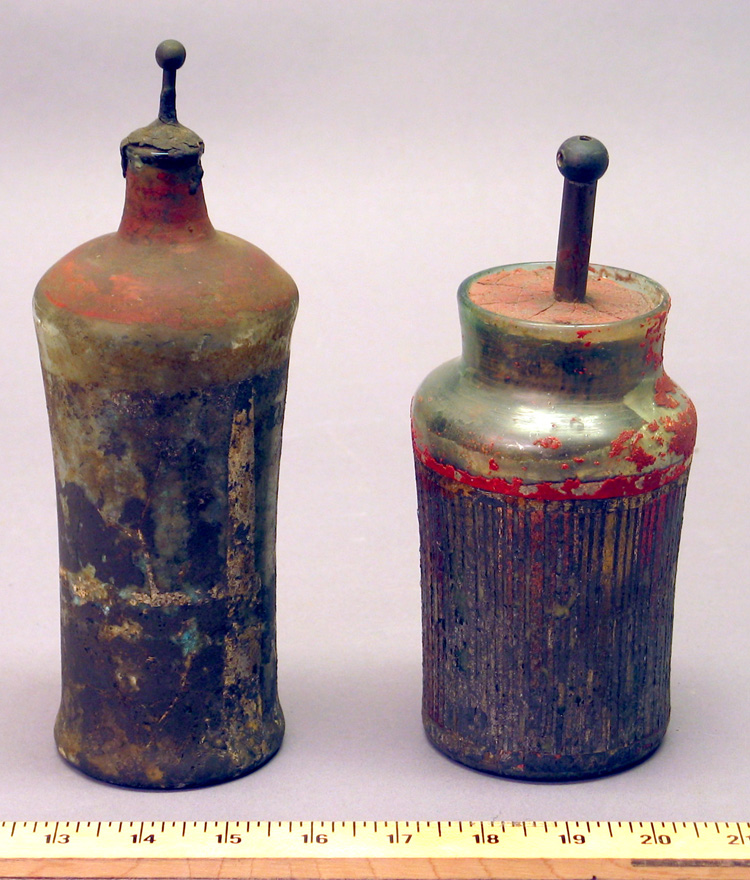
Leyden Jars
Northern Europe, second half 18th century

Leyden jars were bottles used for storing electricity. (More properly, they were capacitors with a bottle form-factor.) They were almost universally wrapped in tin foil for the outer conductor; tin was relatively inexpensive and well-behaved, and eminently flexible for the job of wrapping.
There was one wee problem, though: the part about the high-voltage electricity. With high voltages, you get sparks and corona discharges. These cause all kinds of chemistry in the surrounding air. Ozone is created, and nitrogen oxides. When nitrogen oxides get together with the water vapor in the air, they form nitrous and nitric acid. And these acids chew the living daylights out of the tin. In a relatively short time, the tin starts to corrode, gets brittle, and forms a rough surface that provides all kind of sanctuary for dirt and grime. It still works as a conductor, mind you, but there's no way to clean and polish it. If you want it to look pretty, you gotta take the tin off and put a fresh layer on. And there goes the Antique Authenticity.
Now the insides were a different matter. It was really hard to line the bottle with tin foil. (Trust me. I make Leyden jars for museum programs. I may use aluminum tape instead of tin foil, but I know the routine.) So instead, makers would stuff the bottle full of gold leaf. It's very thin and flexible, and gold laughs at nitric acid. Both these bottles are filled with gold leaf. And it's definitely the old stuff - you can tell. Modern leaf is so thin you can't pick it up without training and special equipment. OLD leaf is thicker. This stuff is thick. (Thick is a relative word. If you crumpled all the gold in these bottles into a ball, a healthy beetle could carry it off.)